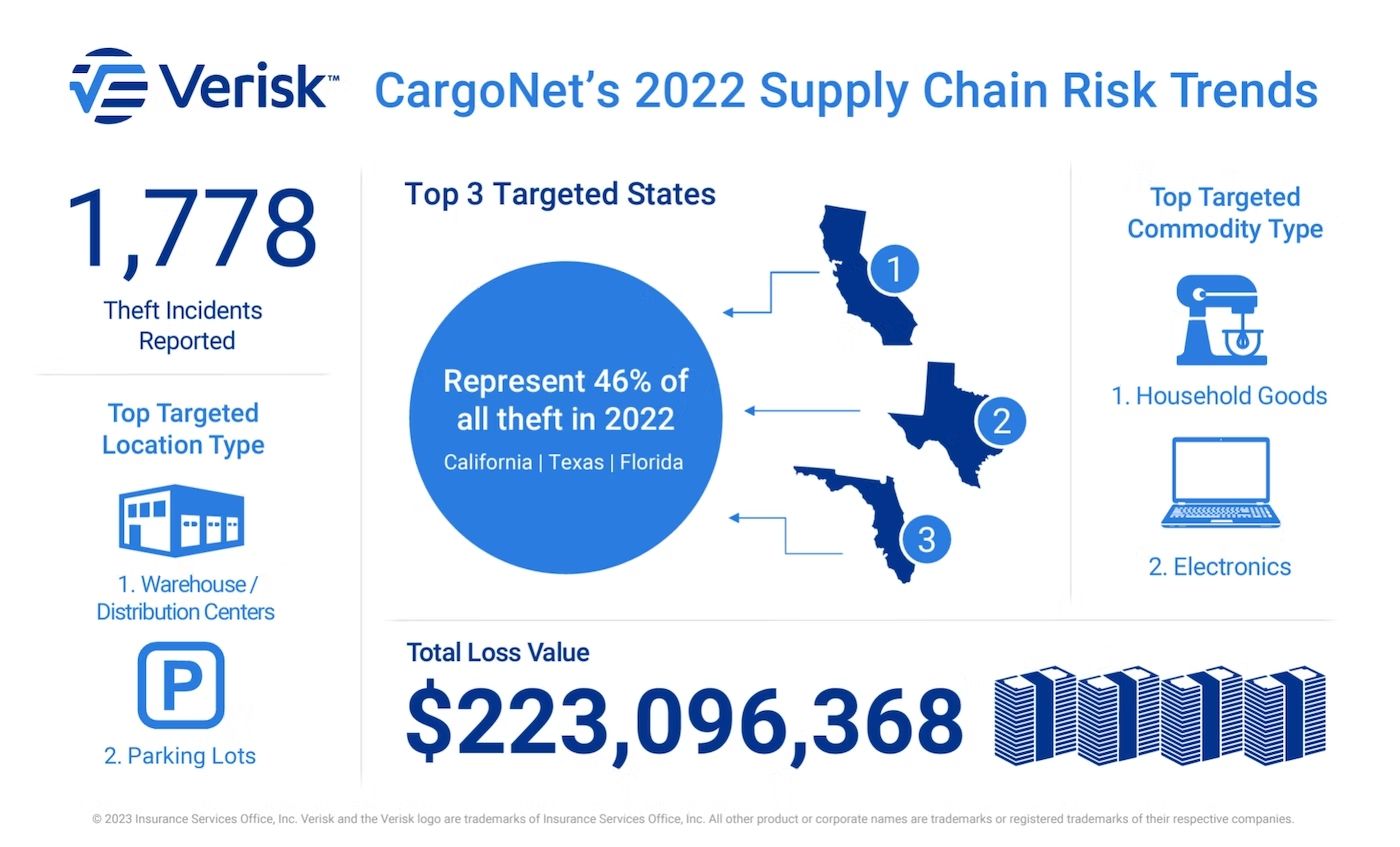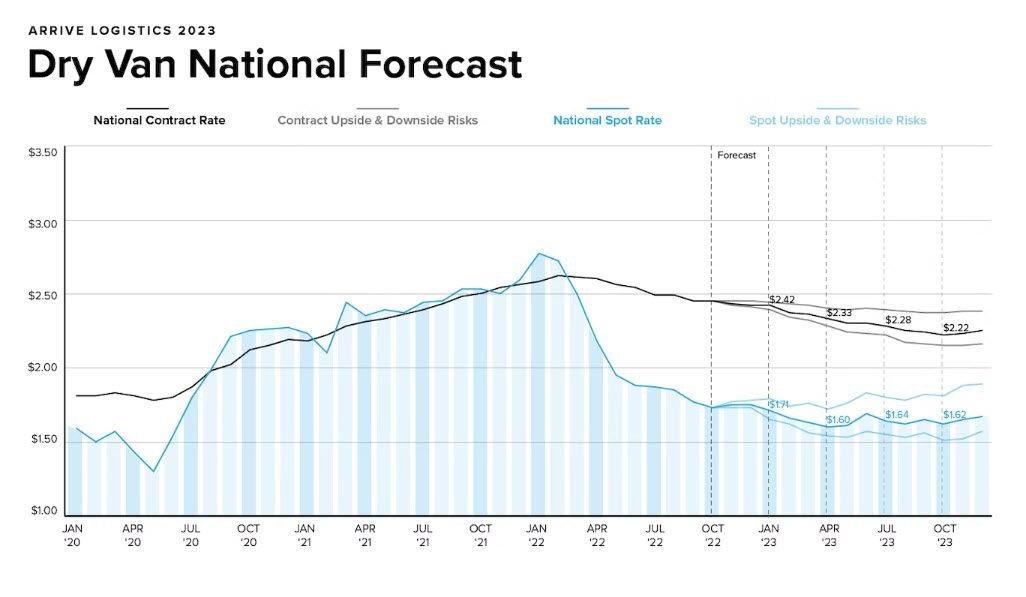Pharmaceutical Logistics Market: Information by Type (Cold Chain Logistics, Non-Cold Chain Logistics), Component (Transportation, Monitoring Components), and Region — Forecast till 2030
Market Snapshot
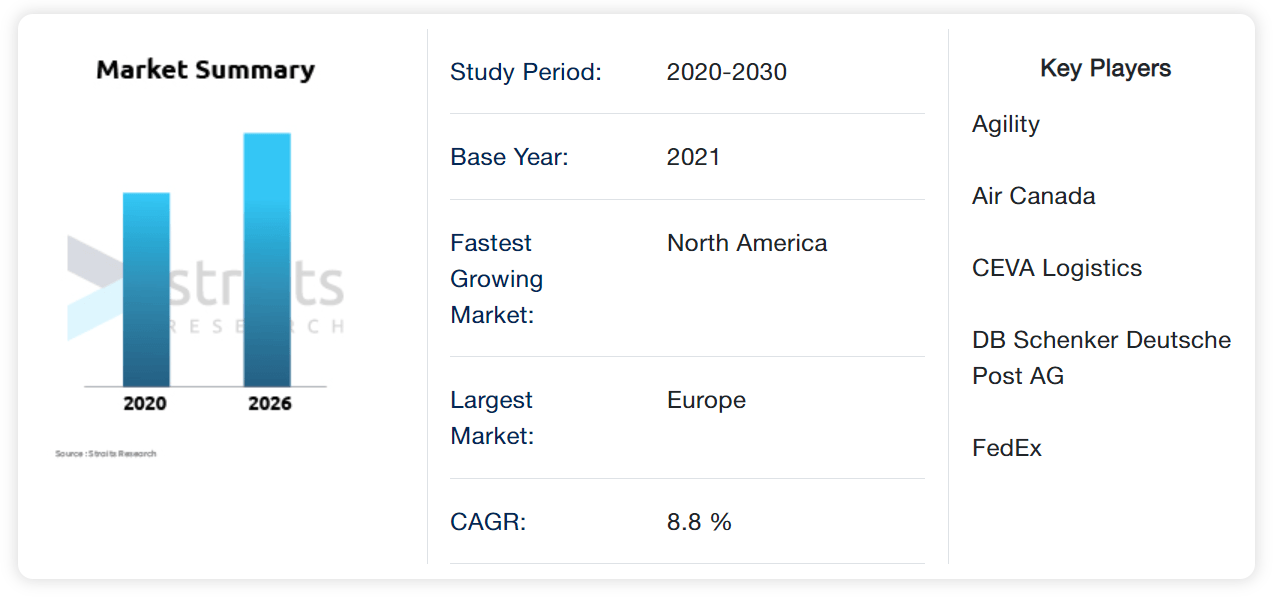
The global pharmaceutical logistics market size was valued at USD 78,427 million in 2021. It is estimated to advance at a CAGR of 8.8% by 2030 to reach USD 1,67,543 million during the forecast period (2022–2030). Handling, transporting, and managing the supply chain for a wide variety of products fall under the scope of pharmaceutical logistics. The vast majority of these products have particular requirements regarding handling them in the logistics process. In the pharmaceutical industry, "logistics" refers to the methods and activities of "procurement," "warehousing," "inventory management," and "transportation" of products, all of which must be performed while ensuring that the quality of medicines is maintained throughout the process of "inventory management.
Compared to other types of logistics, it stands out as being particularly unique because it must cater to the requirements of hospitals, clinics, pharmacies, and other health centers that take into account storage conditions and maintain temperature and humidity levels. Participants in the pharmaceutical logistics value chain include raw material and packaging suppliers, storage and logistics service providers (central warehouse, stockiest, semi-warehouse), hospitals and clinics, retailers and pharmacies, and end customers. The provision of this service is significantly improved by the contributions made by each of the stakeholders involved in the pharma logistics supply chain.
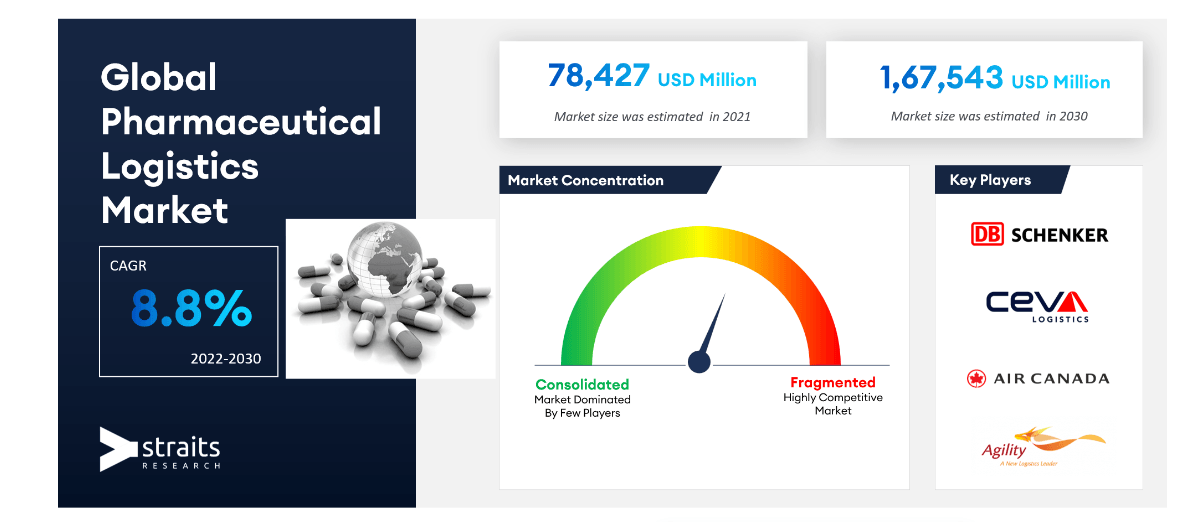
Market Dynamics
Drivers: Mounting Demand for OTC Medicines
The term "over the counter" (OTC) refers to medicines that do not require a doctor's prescription and can be purchased in stores or online without one. When the directions on the packaging are carefully followed, taking these medications will be effective and risk-free. It is common practice to reach for over-the-counter (OTC) medications when treating symptoms such as a fever, cough, sore throat, diarrhea, minor aches and pains, allergies, and other conditions.
It is anticipated that the demand for over-the-counter (OTC) drugs will experience significant growth, particularly in developing nations such as China, India, Brazil, and South Africa, amongst others. This can be associated with a confluence of factors, including a rapidly expanding population, an increasing prevalence of diseases and infections, a higher propensity for self-medication among the people, and the easy availability of over-the-counter drugs through pharmacies and retail outlets.
In developed countries like the United States, over-the-counter drugs continue to hold a central position in almost every pharmacy, acting as a first-line treatment option for customers dealing with minor health issues. According to a study performed by the Consumer Healthcare Products Association (CHPA), consumers' annual spending on over-the-counter products in the United States is more than USD 40 billion. In the United States, over-the-counter medicines are estimated to result in savings of nearly USD 25 billion per year compared to prescription medications.
In addition, in 2018, large retailers such as Walmart collaborated with Anthem, a health insurance provider, to assist enrolled individuals in making full use of their over-the-counter plan allowances when making purchases of OTC items at Walmart.com and in Walmart stores. It is anticipated that the adoption of such collaborative initiatives by critical stakeholders will hasten the growth in demand for over-the-counter products and, as a result, the expansion of the overall market for logistics services during the period under consideration.
Restraint: Regulation of the Government on Good Distribution Practices (GDP)
Distribution is an integral component of pharmaceutical product supply chain management. To maintain the quality and safety of pharmaceutical products, businesses operating in the pharma logistics market must adhere to stringent regulations. There are risks associated with transporting drugs, such as contamination and cross-contamination, and mixing up different batches of medication. Logistic companies must adhere to the Good Distribution Practices guidelines to prevent such occurrences.
The primary objective of regulation is to ensure that pharmaceutical products are consistently stored, transported, and marketed under suitable conditions to keep their dependability and ensure patient safety. GDP ensures product safety and ensures that quality and quantity are delivered throughout the supply chain. It isn’t easy to maintain the quality of drugs during transport due to their specific storage requirements and short shelf life.
Following GDP regulations, all persons and locations involved in storing and distributing pharmaceutical products must undergo several procedures. Each time the goods are transported from the factory to the warehouse, a sample must be taken for laboratory testing before the entire batch is shipped. Due to these stringent regulations, many manufacturers pursue a less complex distribution system to reduce costs and increase logistical flexibility. As a result of the multiple restrictions imposed in various regions, many logistics companies' delivery of logistics services is complicated.
What Are Future Growth Opportunities in Global Pharmaceutical Logistics Market?
Widescale Adoption of Advanced Technologies in Pharmaceutical Logistics
The adoption of digitalization in pharmaceutical logistics has significantly transformed the industry by enhancing the safety of drugs, boosting productivity, and enhancing processes via the implementation of advanced technologies. This category of technologies includes machine learning, big data, and automation instruments. The deployment of automation tools and big data increases the visibility of supply chain logistics and control. For example, companies such as FedEx have implemented innovative tools, such as SenseAware, which aid in tracking and monitoring the required temperature and humidity for any drug.
Several logistics providers use automated storage and retrieval systems to accommodate these varying customer requirements. Mechanical and retrieval systems are used in manufacturing, distribution, and warehouse operations to manage inventory. These highly sophisticated systems consist of retrieval and storage machines that move upward and downward through multiple parallel storage passages.
In addition, the use of warehouse execution software and warehouse management software increases the efficacy of various warehouse operations by reducing human error through the application of intelligent systems. In addition, the use of blockchain technology in the logistics industry brings a new level of transparency to a supply chain in which the security and authenticity of drug information are paramount.
Segmental Analysis of the Global Pharmaceutical Logistics Market
The global pharmaceutical logistics market share is divided into two segments Type and Component.
Based on type, the global pharmaceutical logistics market has been segmented across Cold-Chain logistics and Non-Cold Chain logistics.
Why are Non-Cold Chain logistics the Most Popular?
Non-Cold Chain logistics is expected to command a share of USD 1,09,711 million at a CAGR of 7.7%, whereas Cold-Chain logistics is expected to grow at a higher CAGR of 11.8% during the forecast period. The significant growth is attributable to the increasing demand and distribution of temperature-controlled products, such as the distribution of COVID-19 vaccines, which require temperature-controlled logistics to preserve the efficacy of the products. In addition, strict government regulations requiring precise temperature maintenance during the distribution of temperature-sensitive pharmaceuticals are anticipated to boost the segment's growth over the forecast period.
The increasing use of telematics in cold chain pharmaceutical logistics enables companies to improve their efficiency, connectivity, and transport safety. Moreover, the rising adoption of cloud computing solutions and new IoT devices in refrigerated trucks and containers enables pharmaceutical logistics companies to provide real-time remote temperature monitoring while transporting temperature-sensitive drugs and vaccines. Most biological and medical products need a temperature-controlled environment during the manufacturing and distribution stages, which helps preserve the medicines' efficacy and quality. Therefore, pharmaceutical companies utilize temperature-controlled transport and cold storage systems.
Based on components, the global pharmaceutical logistics market is segmented across Storage, Transportation, and Monitoring Components.
The Storage segment is expected to hold a share of USD 1,02,437 million at a CAGR of 8.2% during the forecast period. Depending on the nature of the drugs, the storage component involves all operations related to the storage of pharmaceutical products. For example, temperature-sensitive drugs are stored in cold storage facilities and warehouses designed to maintain the required temperature. The rapidly increasing demand for generic and brand-name pharmaceutical products has increased the need for storage facilities to preserve the efficacy of pharmaceuticals after production and distribution.
In addition, the pandemic increased the demand for temperature-sensitive storage facilities to ensure that vaccines are kept at the proper temperature during distribution. This is anticipated to boost the segment's growth in the coming years. Changing consumer lifestyles and dietary patterns are driving the demand for temperature-sensitive protein and nutritional supplements, increasing the need for the storage segment during the forecast period. The Storage component includes Warehouse and Refrigerated Containers.
The Monitoring segment is estimated to grow at a higher CAGR of 11.8% during the forecast period. To ensure the efficacy, integrity, and safety of pharmaceutical products, there is a growing demand for the use and integration of advanced technologies in storage facilities and transportation vehicles. The monitoring components section is divided into Hardware and Software components. The high adoption of supply chain management software to monitor the temperature of distributed/transported products in real-time is anticipated to further fuel the growth of the software segment.
The Transportation segment includes Sea Freight Logistics, Air Freight Logistics, and Overland Logistics. Because sea freight logistics services can handle sensitive large molecule biologics and personalized medicines, the escalating acceptance of sea-based pharmaceutical logistics is influencing the market's growth for pharmaceutical logistics. This drive is attributable to the increasing adoption of sea-based pharmaceutical logistics.
Regional Analysis of the Global Pharmaceutical Logistics Market
Region-wise, the global pharmaceutical logistics market share is classified as North America, Europe, Asia-Pacific, South America, and the Middle East and Africa.
Which Region Accounts for Most Demand for Pharmaceutical Logistics Market?
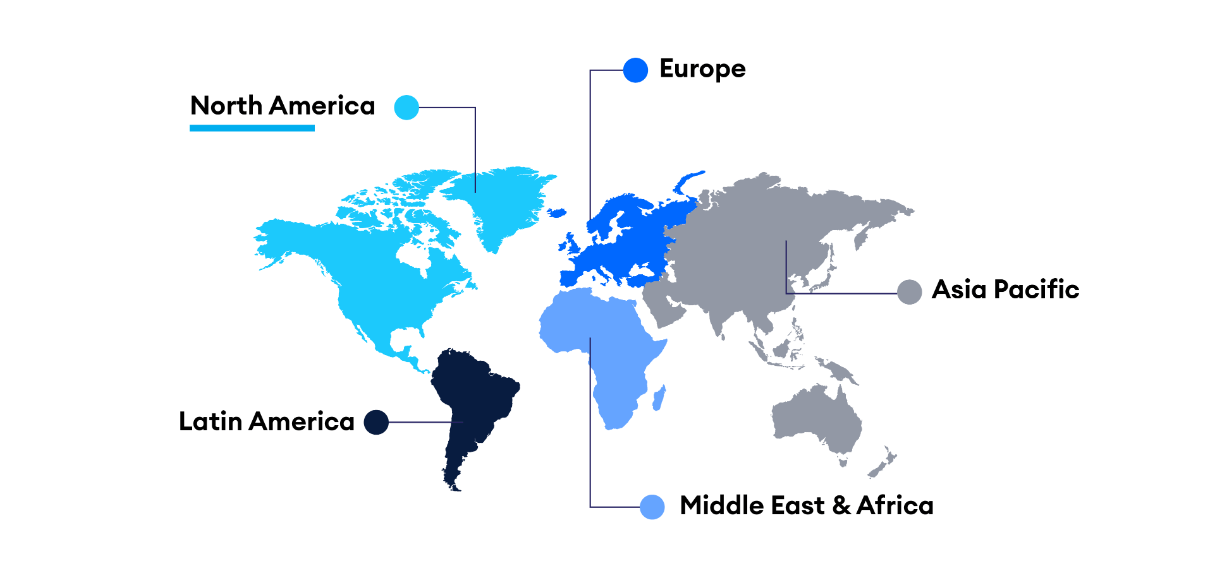
The region of Europe is expected to grow at a CAGR of 9.2% and hold the largest share of USD 66,944 million by 2030. The significant increase in the trade of pharmaceutical products across key European countries such as Germany, the United Kingdom, France, and others is responsible for the substantial rise in market share. In addition, as production and demand for numerous categories of pharmaceutical products, such as over-the-counter medicines, continue to rise, it is anticipated that the need for pharma logistics will continue to be robust in the years to come.
Next to Europe, the North American region is expected to hold a share of USD 51,621 million at a CAGR of 7.7% during the forecast period. The substantial amount of pharmaceutical products bought and sold within the country is the primary factor behind the high market share. According to the research, in 2021, the United States held more than 40% of global sales of pharmaceuticals.
Asia-Pacific will be the fastest-growing region, with a CAGR of 9.7% during the forecast period. This will be the case due to the rapidly increasing population, expanding economies, and increased demand for over-the-counter medicines in developing nations like China, India, and countries in the ASEAN region. In addition, the production and sales locations are moving around in the pharmaceutical industry, causing a geographic shift. It is anticipated that the market players' discovery of lucrative opportunities in the developing economies of Asia and South America will, in turn, boost the growth of the market in these regions.
Top Market Players
List of Top Pharmaceutical Logistics Market Companies
- Agility
- Air Canada
- CEVA Logistics
- DB Schenker
- Deutsche Post AG (DHL Express)
- FedEx
- VersaCold Logistics Services
- Biocair
Recent Developments
- 2022- Agility Logistics announced that digital freight forwarding arm Shipa Freight would merge with Barcelona-based iContainers.
- 2022- CEVA Logistics signed a five-year omnichannel logistics contract with Sephora in Brazil.
- 2022- CEVA Logistics opened its new Contract Logistics Warehouse in Jundiai, Brazil.
- 2022- CEVA Logistics to team up with Kodiak Robotics, Inc. to deliver freight autonomously between Dallas Fort-Worth and Austin.
Global Pharmaceutical Logistics Market: Segmentation
By Type
- Cold Chain Logistics
- Non-Cold Chain Logistics
By Component
- Storage (Warehouse, Refrigerated Containers)
- Transportation (Sea Freight Logistics, Air Freight Logistics, Overland Logistics)
- Monitoring Components (Hardware, Software)
By Regions
- North America
- Europe
- Asia-Pacific
- South America
- The Middle East and Africa









